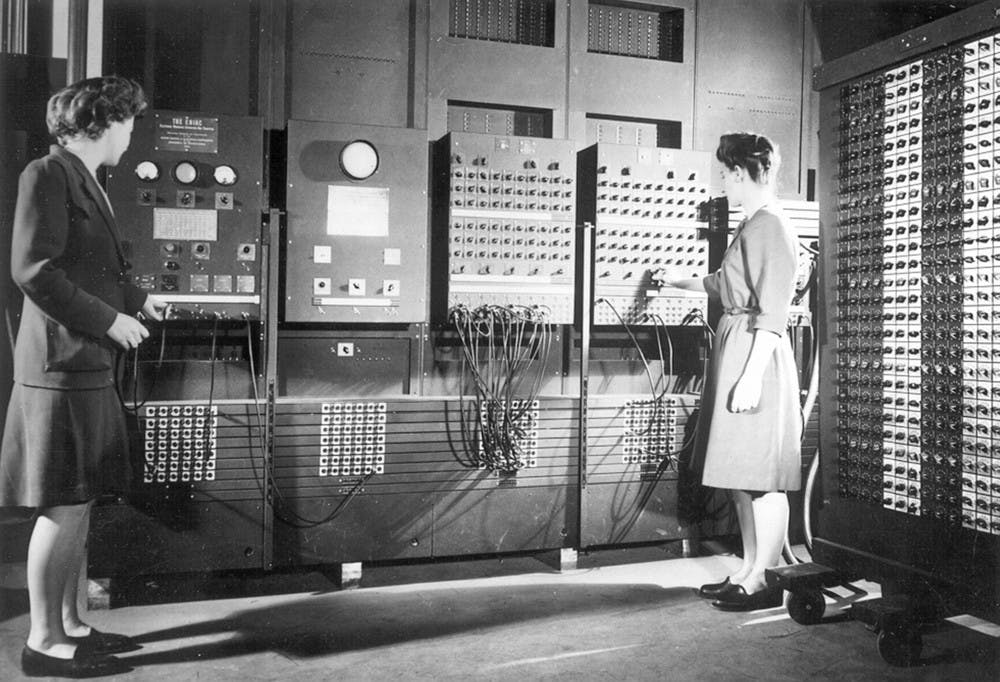This year, Penn is celebrating the 66th anniversary of the world’s first computer.
Created in 1946, the Electronic Numerical Integrator and Computer, better known as ENIAC, was the first-ever general-purpose electronic computer.
However, a lesser-known fact is that this launching pad for future technology has its birthplace in Penn’s own Moore School of Electrical Engineering, which is now part of the School of Engineering and Applied Science.
The device was created by John Mauchly, a physicist who taught a course on electrical circuits at Penn, and J. Presper Eckert, a graduate student who studied at the Moore School in the 1940s.
A piece of the device is now housed in the Smithsonian in Washington, D.C., with one part of it still on display in a glass case inside the Moore School.
At the time of its creation, ENIAC was hailed by The New York Times as “an amazing machine, which applies electronic speeds for the first time to mathematical tasks hitherto too difficult and cumbersome for solution.”
According to Jim Duffin, senior archivist at the University Archives, the invention was revolutionary for its time because, unlike previous computational devices, ENIAC was entirely electronic.
“To do something like ENIAC was outside the general trend of the time,” he said. “Up until ENIAC, all computational devices had been entirely or partially mechanical. So ENIAC, which was entirely electronic, was certainly a departure from that time.”
Electrical Engineering professor Jan Van der Spiegel said the ENIAC represented a “milestone” in the history of electronic computing.
Van der Spiegel oversaw the “ENIAC-on-a-Chip” project for the computer’s 50th anniversary 16 years ago, which aimed to recreate the original ENIAC on a tiny computer chip.
“The real reason it was revolutionary is because ENIAC was a thousand times faster than other computational device that had ever been built,” Van der Spiegel said. “Imagine what the reaction would be if a computer manufacturer came out with some computer that was a thousand times faster today.”
According to Van der Spiegel, ENIAC’s high degree of accuracy and its ability to compute complex differential equations added to its appeal when first launched.
According to Duffin, the University received funding from the United States military to build the computational device. In this regard, he said, it was very much a part of a wider trend at the time of universities and research labs across the country working to build a faster, more efficient computational device.
“The key to the whole project was the war,” Duffin said. “The army wanted a computational device to track the firing of ballistics. One of the colleges that they also funded was MIT.”
Engineering freshman Sai Parepally, who frequently studies in the Moore labs, said he first noticed the display of the machine during a campus tour last year.
“I had heard of ENIAC before, but I didn’t know Penn played such a major part in it,” he said. “I think it’s a cool reminder of the history and accomplishment in Penn engineering.”
“I think the most important part of this invention is that it proved to the industrial and scientific community that a large-scale, complex machine like this was actually possible,” Van der Spiegel added.
“Everyone thought it was too tricky and risky to try to do this. These two young men at Penn really proved everyone wrong.”



